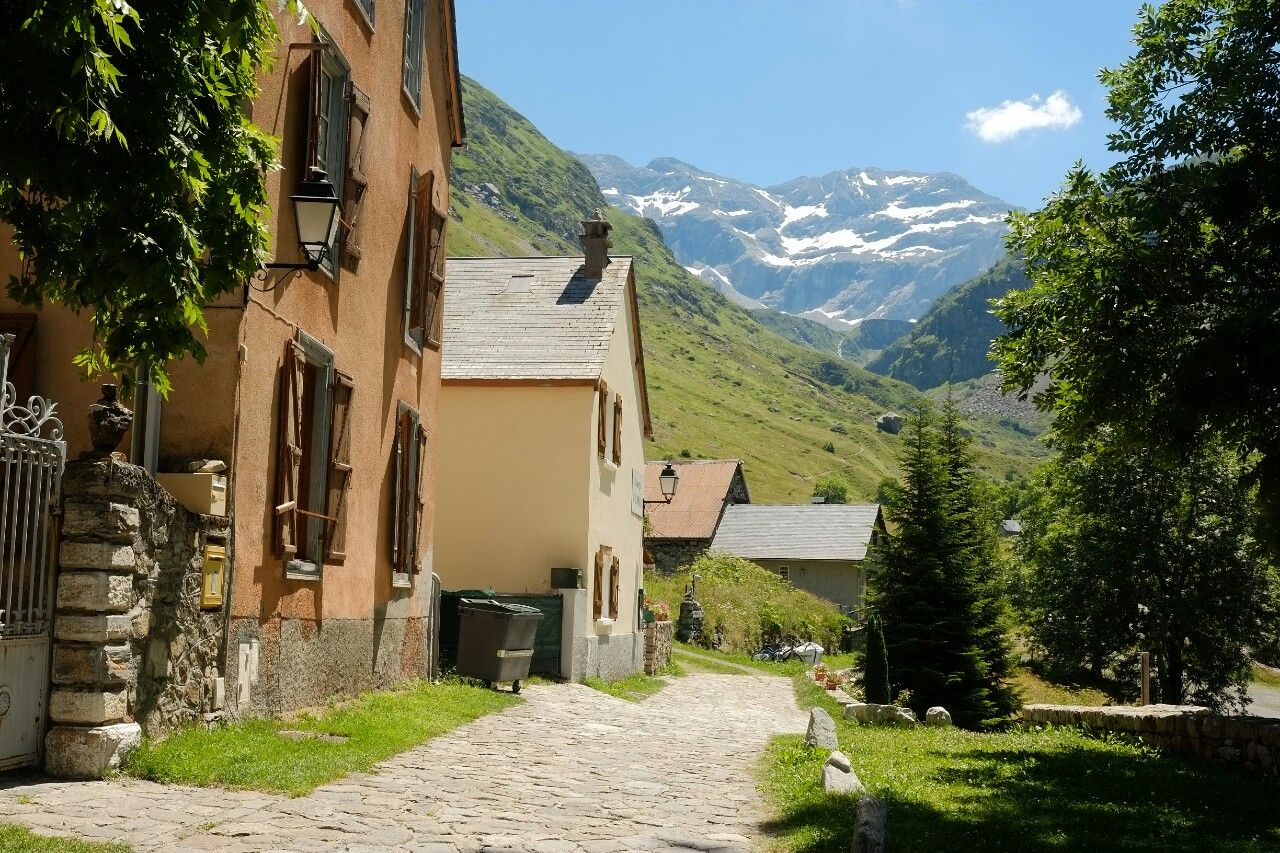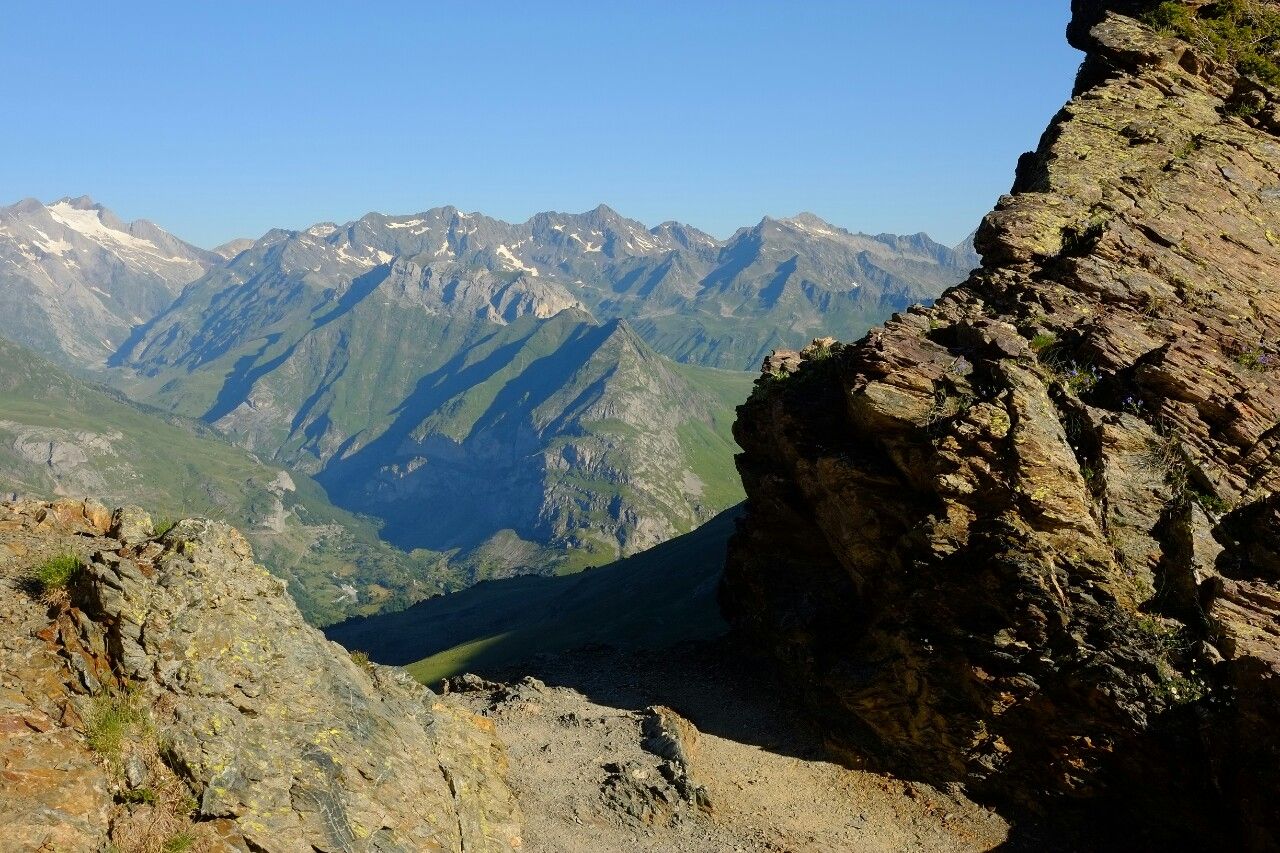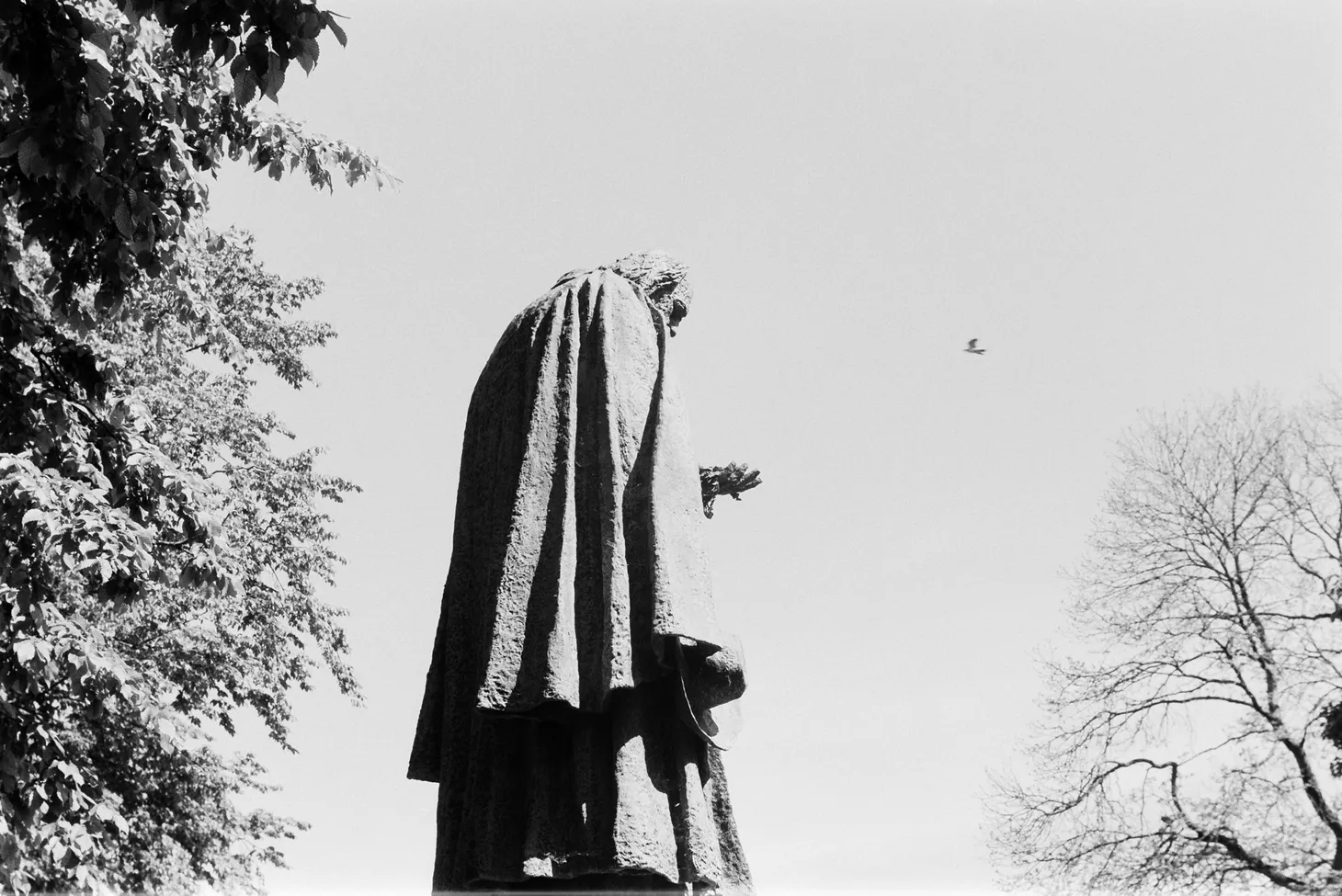HRP Day 5

The HRP / GR11 blog series
A Heas Heatwave
Total miles walked: 52
HRP Stage: 17/18
Location: Beneath Hourquette de Heas
The dingdigding of a herd of sheep woke me at just before 6.00am. When I opened my eyes and looked through the entrance of my shelter, I saw the dawn painting broad alpenglow brushstrokes on the uppermost citadel of the Cirque de Gavarnie. In a flash I had my camera in hand and was outside in the calm morning, photographing the spectacle.
After the light show faded I went back to bed, and didn’t wake up again for another two hours, by which time the sun was well up and a steady trickle of walkers were coming up the path from the Refuge des Espuguettes.
As I was striking camp, one older gentleman pointed to the noisy herd of sheep and said something in French.
‘Anglais,’ I said with an apologetic shrug (my usual tactic in these situations).
‘Ach, that’s grand! I’m Scottish myself,’ the man said.
Delighted to have at last found someone on the trail who could speak English, we chatted a bit about the local mountains, and about the HRP. He warned me that the Barroude refuge just before the crossing to Spain had burned down, and that parts of the GR11 are very poorly marked. He seemed surprised that this was my first journey in these mountains, and expressed doubts that my Trailstar would be any use in Scotland. His surprise increased when I told him I’d used it for a 280-mile hike in the Highlands earlier in the year.
After I’d packed up, I made the short ascent to the col (the Hourquette d’Alans) and there to my surprise met two other walkers who spoke English. We talked conditions; they had heard most of the snowier mountains were still out of condition due to late-lying snow, and that many of the passes in the Aneto region are hazardous. I will have to make up my mind in a couple of days whether to take the much harder northern route, or the southern variant along the GR11 via Benasque. It’s starting to look like the latter might be the more prudent course.

The descent of the Vallee d’Estaube was scenic but increasingly hot. I soaked my bandana with water every chance I got, which helped, but it always dried out again within half an hour. These conditions are a revelation! I can wash my clothes and have them dry again in an hour or so. Try doing that on the trail in Scotland!
Nevertheless, the heat is very draining and by the time I got to Lac des Gloriettes I was ready for my customary mid-day siesta – but I couldn’t really find a suitable spot. This lake is actually a hydro reservoir and the sides are very steep. Immediately after the lake, the HRP takes to a road which descends steeply in many hairpins for some distance, then another road at low altitude and exposed to the blazing sun. At least today I’ve been a bit more careful with my water supply and have topped up the full two litres at every opportunity.

So I ended up walking all the way to Heas, a tiny hamlet at the end of Stage 17. It’s now just gone 14.00 (mid-day here) so I’ve found a shady spot outside the chapel, next to the water fountain, and won’t budge until at least 18.00. I’m probably going to head up the hill to make some inroads into tomorrow’s ascent and camp at a higher altitude. It’s too hot for my liking down here!
(An aside: the chapel at Heas is interesting. Apparently it was almost completely destroyed by an avalanche in 1915; inside there are photos showing the hamlet engulfed in a vast deluge of snow, with only the shattered chapel tower protruding above the devastation. It was rebuilt in the 1920s. Apparently there is also some kind of legend associated with the location, but my French isn’t good enough to find out any more…)
Later
Before I left Heas, I had another one of those conversations that makes me think I’m on some kind of a Zelda / Lord of the Rings quest.
I was sitting on the wall outside the chapel, when an incredibly old woman tottered towards me and said something in French. After the usual exchange, it turned out she spoke reasonable English, and was all smiles when she discovered I was touring the region on foot.
‘And where are you going tonight, Monsieur?’
‘Hiking up to the hut at the Aguila. I’ll probably bivouac there before heading to Barroude tomorrow. I’m in no hurry.’
She became excited at this. ‘Then you must drink from the sacred well!’
‘The… sacred well?’
‘Oui! It is up at the Aguila. The Oratoire de Sainte-Famille. It is good luck for pilgrims to drink the waters, and my mother used to say it could grant long life.’
At this, a bystander, who had been listening to our conversation, snorted and said something in French. The old woman laughed, then turned to me again. ‘He says his sheep drink from the well every day yet live no longer than other sheep.’
Nevertheless, this intrigued me – especially as the Oratoire de Sainte-Famille is mentioned as a water source in Joosten. I began the slog uphill at about 18.00, and after the usual tiring switchbacks I reached the Aguila in about an hour and a half. There is a small cabane here that acts in the same capacity as a bothy, and across the strath from this building I saw the sacred well!

It’s built from rough stones and has a plaque with an old inscription in French. The saints’ niche contains three striking saint statues made from pillars of crystal, two of which have heads made from plaster or some similar material stuck on top. It’s my guess that the third saint once had a similar head.
Beneath this saints’ niche (which is in itself by no means unusual) a spring of clear water welled up out of the ground. I filled my bottles there, and I can confirm that it is unusually sweet water – but whether or not it will grant me luck or long life is anyone’s guess!
I kept hiking through a landscape of crazy rock architecture and torrents that disappeared underground only to reappear later on. I’d wager this is limestone country (I saw a lot of marble pavement earlier in the day). Soon I reached the uppermost alp where there is another tiny cabane (occupied by hikers). I soon found a perfect spot to camp beside another disappearing watercourse, and this time I have pitched my Trailstar as high as possible, to give plenty of airflow. I’ve been having issues with condensation in the flat calm weather.
Stage 18 goes all the way to Parzan in the book, but Joosten admits this is a tough stage and best split in two. Even though I’ve already done most of the initial ascent, I think I will make for Barroude tomorrow, which is apparently a superb place for a wild camp. I would rather take my time and enjoy the landscape to the full than hurry for the sake of hurrying.
Alex Roddie Newsletter
Subscribe here to receive my occasional personal newsletter in your inbox. (For the fun stuff, please consider subscribing to Alpenglow Journal instead!)



